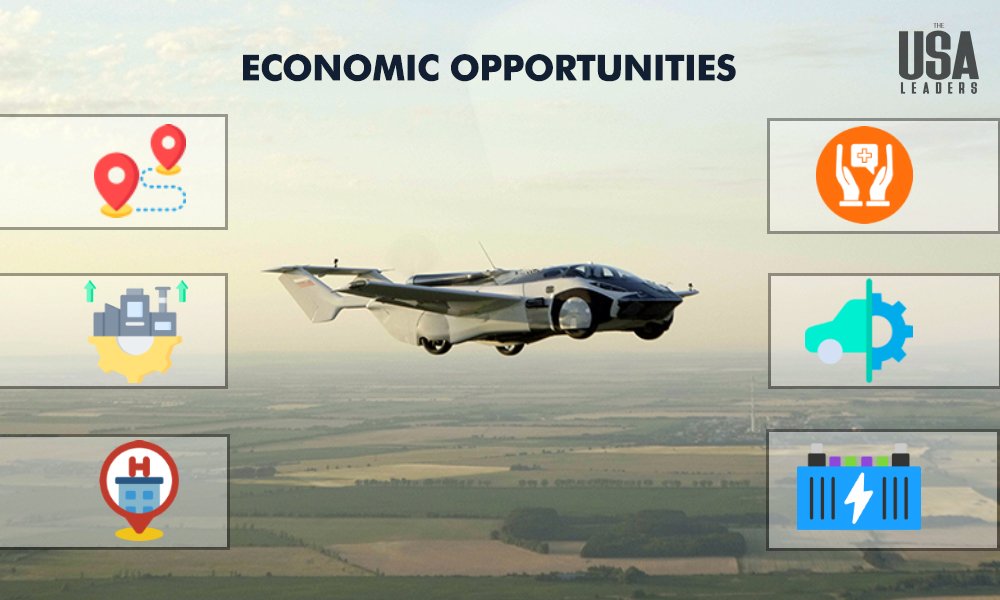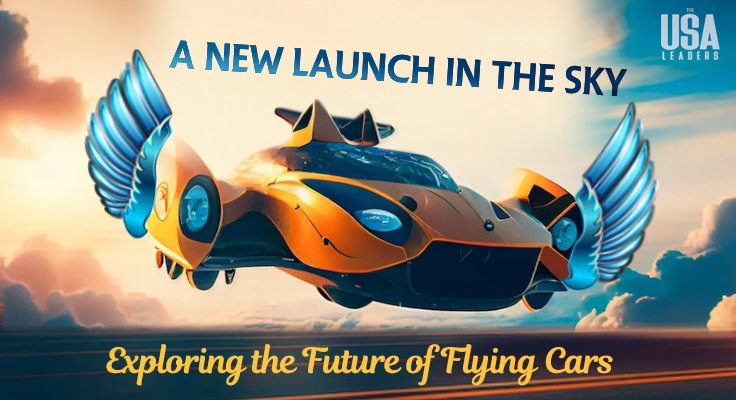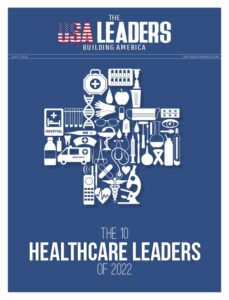When someone asks us, “How will the future be?” we always include the point of flying cars in our conversation. Various stories, animations, cartoons, etc., have always portrayed this concept. Initially, nobody could predict when such cars would become the new normal, but now the wait is almost over. With rapid technological advancements every year, the transport industry is exploring its potential more than ever. Experts predict that the global market for the flying car industry will reach $1.6 billion by 2030. In this blog, we will talk about the possibilities, impacts, challenges, and opportunities associated with the future of flying cars.
Let’s begin!
1. Technological Advancements
- Electric and hybrid vehicles rely on electric propulsion, which uses an electric motor to enhance engine performance, power the vehicle, and improve safety, efficiency, and range. The market value was $14.72 billion in 2023.
- In flying cars, autonomous systems utilize sensors to detect traffic lights, signs, pedestrians, and vehicles, creating a map of the surroundings to enhance navigation and safety. The market value is projected to reach $5.68 billion by 2033.
- Advanced materials such as carbon fiber, titanium alloys, and aluminum alloys enable the construction of durable and lightweight flying cars. The market value was $65.2 billion in 2023.
- Flying cars can operate in densely populated areas without extensive infrastructure, thanks to their Vertical Takeoff and Landing (VTOL) capabilities. The market value for such technology is estimated at $33.45 billion.
2. Urban Air Mobility

Urban air mobility aims to reduce traffic congestion in densely populated areas by utilizing small automated vehicles for passenger and cargo transport. This efficient system saves time, ensures safety, and reduces air pollution. We envision integrating it into a multimodal mobility system for the future, which will offer significant traffic reduction. The environmental benefits include reducing air pollution and saving fossil fuels by using electric flying cars. However, the implementation is hindered by infrastructure challenges such as the need for landing pads, charging stations, and maintenance facilities. To turn this concept into reality, we must overcome obstacles like pilot training, safety standards, and social resistance. The UAM market is valued at $3.8 billion in 2023.
3. Environmental Impact
The future of flying cars will not produce any air pollution. People will use such cars in the future, and they will completely eliminate their carbon footprint. Today, cars are one of the biggest causes of air pollution. According to research, electric flying cars will reduce greenhouse gases by 52% and generate 6% lower greenhouse gas emissions than electric cars over trips of 100 kilometers, or about 62 miles. These cars would be very useful in populated cities since the more the population, the more pollution. It suggests that flying cars may also reduce the future use of airplanes.
4. Economic opportunities

The new future of flying cars is also going to bring significant benefits to other industries.
- Travel and Tourism Industry: Flying cars will make travel more convenient. Whether people are traveling or cargo is being transported, these cars will save time, avoid traffic congestion, and provide convenience. In the future, tourism could be done in both ways. People can choose to travel to destinations on their own, or travel companies can arrange their travel via flying cars.
- Infrastructure industry: The future will require a lot of infrastructural construction, such as landing pads, charging stations, airways, parking spaces, and maintenance stations.
- Hospitality industry: The future may see the emergence of skyports or airhotels, as many tourists would prefer to rest as they travel. These facilities will ensure smooth travel. It may take some time for humans to fully adapt to flying cars.
- Insurance industry: The insurance sector may need to develop new insurance policies associated with aerial transportation. Insurers would have to offer coverage for potential accidents, collisions, and third-party liabilities.
- Automobile, Material, and Tech industries: The automobile industry will profit the most, as many people will manufacture and purchase flying cars once using such vehicles becomes normal. Additionally, the material industry will benefit, as they will have to carefully select lightweight and durable materials to construct such a complex machine. Advanced technologies will also be used to drive the vehicle, as mentioned above, making the tech industry profitable as well.
- Electric industry and Battery industry: Since these vehicles will heavily rely on electricity, this industry will also flourish. It will invest heavily in collaboration with the battery industry to develop better and longer-lasting batteries for traveling long distances.
5. Challenges and Limitations.
Although we imagine flying cars to be easy in the future, the reality is that they are not. There are many challenges at present.
- Safety and Reliability: Technological advancements have made using flying cars possible today. We have come closer to achieving this dream through the development of technologies such as VTOL, Electric propulsion, advanced materials for car construction, and the Autonomous system. However, we still need to test these systems further before finalizing the model. We must address concerns such as midair collisions, emergency landings, and mid-air collisions to gain the public’s trust.
- Cost: Many people wish to buy a flying car regardless of the situation, but money is the issue for them. These cars are currently very expensive, and common people can’t afford them. The cost of purchasing a flying car currently ranges from $1,20,000 to $3.5 million. Additionally, the maintenance of such cars will be very costly. These cars cannot work with a normal automotive battery.
- Building infrastructure to support the car: Let’s say someone still buys the car, but what about other issues such as a landing pad, charging station, maintenance facilities, and air traffic? The government has not yet built such facilities to encourage people to buy cars.
- Public Trust: People see potential in the future of flying cars, and they like this concept. However, they have not been able to accept and adapt it to their daily lives because many structural issues, financial issues, safety issues, and environmental issues have not been publicly addressed by authorities. As a result, nobody wants to purchase a car.
- Coordination: Proper planning for the implementation of flying cars involves coordinating air and ground traffic, developing intermodal connectivity, and providing seamless transfer options between different modes of transportation.
- Shortage of Pilots: Currently, nobody has been trained on how to use a flying car, except for airplane pilots.
6. Future Possibilities

Well, just like flying cars will become our reality at some point in time, they will also bring a bundle of possibilities, such as:
- Other uses: Flying cars could revolutionize emergency medical services and rescue operations. E-commerce businesses could utilize them for product deliveries, while postal services could become quicker. Aerial inspections could be conducted for surveys, and researchers would gain easier access to remote locations, contributing to advancements in fields such as ecology, geology, and atmospheric sciences. Aerial sports could also emerge as a new genre in the sports industry, and photographers might use flying cars for scenic and wildlife photography.
- Integration with AI and Drones: The use of AI will enhance driving experiences through advanced algorithms. AI’s sensor technology will help avoid aerial accidents, and it can effectively manage air traffic and regulate flying cars.
- Similarly, imitating drones will enable flying cars to take off in a flexible manner and operate smoothly in urban areas, thereby avoiding accidents.
7. News Related to flying cars
The exciting news is floating around the topic:
- Alef Aeronautics has launched “Model A,” the first flying car, with its official flying car design. The design resembles a normal car, but it hides propellers on the top. The car can accommodate up to two passengers for travel.
- They have approved the first flying car and are all set for testing. It is said that the flying car will be ready to take off by 2025. Alef Aeronautics has launched the product, and the price is $300,000. They are saying that the car can now be pre-ordered. They have named the model “Model A,” and it will carry two passengers. Drivers can use it on public roads and can take off vertically as soon as the tests are over.
- The next achievement of “Model A” is that the Federal Aviation Administration (FAA) has recently approved the airworthiness certificate of “Model A.” The FAA has allowed Alef Aeronautics to begin test flights this month. The FAA’s clearance marked the first time the US Government has legally approved a vehicle like this. “Model A” has a driving range of 200 miles and a flying range of 110 miles.
In conclusion, the future of flying cars looks very promising. These cars will not only benefit customers but also benefit various industrial sectors. Flying cars will create a lot of new job opportunities. Although these vehicles currently face infrastructural setbacks, they have many benefits. In the next 10 years, these cars will be used in reality and will create a new revolution altogether. It will be interesting to see what steps the government takes to provide solutions to the issues mentioned above, now that the first car is all set to launch in 2025.
ALSO READ: History of Starbucks: 11 Tempting Things You Probably Don’t Know About





















